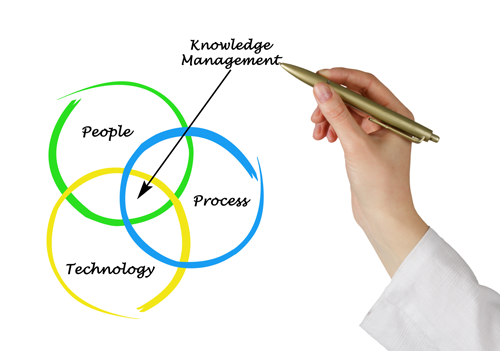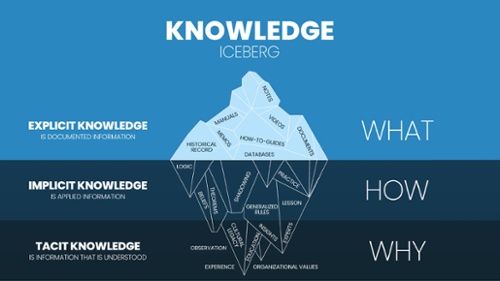Organizational Knowledge Management: Take it one step at a time
The first step to closing the gaps is to acknowledge that they exist. Streamline your organizational knowledge, making it accessible and actionable...
3 min read
Innovatia : Mar 20, 2023 6:20:41 PM

Deciding whether to start with a digital or content transformation does not have to incite boardroom debates over a causality dilemma, like that of whether the chicken or the egg came first. From our perspective, the content comes first.
For an organizational change of any kind to be successful, effective communication must be present. That means the language must be consistent, the information must be consistent, and the way it is delivered must be consistent. “Content” is at the core of good communication.
The digital transformation of adopting technologies, software, programs, etc. is typically a lengthy process that can span months or years. Your business is likely going to continue operating while all new systems are implemented.
How can you plan to make the transition smooth and efficient? We have seen how initiating a content transformation strategy as early as possible has propelled transformative processes forward.
This is what content transformation is all about. Taking information such as facts, data, processes, and standard operating procedures, and contextualizing it. Generating it in such a way so that when a person, or user, needs information it is available, easy to reach, and easy to use. And that is an important piece to remember, the goal is to help people so they can improve the performance of the business. Whether it is to accomplish a task, provide customer service, or learn something new, the people using the content should always be top of mind during a content transformation.
For a business to turn its information into effective content the process involves taking the originals, which in some cases can be legacy monolithic applications or even binders sitting on shelves in regional offices and reconfiguring that information for today’s business environment.
Content transformation is a little more than a car wash. It is a holistic, comprehensive review and overhaul of the information. It must become relevant to the users and integrate with multiple systems. In other words, it must become structured in a way that is modular, reusable, and dynamic.
Modular refers to the content strategy that involves breaking up larger pieces of content into smaller, self-contained modules. Each module can then be used or reused independently, allowing content creators to combine different modules quickly and easily.
Reusable refers to any type of content that can be repurposed or reused in various formats or contexts including anything from text, images, videos, or documents like blogs and articles. The main benefit of reusable content is that it saves time and effort for content creators. Rather than starting from scratch, existing content can be repurposed in a way that is still valuable and relevant to its audience. It also helps deliver a consistent message and maintain a single voice irrespective of the channels the content is shared in. It is a smart and efficient way to maximize the impact of content creation.
Dynamic content is how the content modules or reusable content is assembled at runtime to create a document, usually in a way that can be automated. Dynamic content refers to content that changes based on user behavior, preferences, or other factors such as location, time of day, or browsing history. This type of content is often used to provide a more personalized content experience. By using modular content, data, and automation tools, organizations can quickly and efficiently deliver dynamic content across a variety of channels and platforms.
Not to be overlooked, there are some additional benefits to engaging in a content transformation process that can have a significant impact on operations. The first is identifying information that is outdated, or inaccurate. This can lead to costly errors or inefficiencies. The second is exposing knowledge gaps. These can occur when new processes or software were introduced but little to no information is provided on how to apply one set of systems or processes to another. We have seen this become a big challenge for businesses that find themselves scrambling when employees who possess a great amount of organizational and application wisdom leave. And third, the inefficiencies that can occur produce a drag on profits, margins, and operating expenses.
Like any complex project, breaking it down into smaller pieces that are easy to execute is always an effective way forward. Working through a digital transformation is no different. And the same rule applies to managing information and delivering it as content. Taking a people-first approach increases an organization’s ability to implement organizational change. Content transformation is a vital component to ensure users are equipped with the knowledge they need when they need it. It is a valuable exercise to prepare not just for digital transformation, but for modernizing, scaling, and boosting productivity and operational efficiency.

The first step to closing the gaps is to acknowledge that they exist. Streamline your organizational knowledge, making it accessible and actionable...

The promise of artificial intelligence isn't just about new technologies offering efficiencies—it's about unlocking the vast reservoir of knowledge...

In today's fast-paced digital landscape, businesses are generating and consuming vast amounts of information and knowledge at an unprecedented rate....